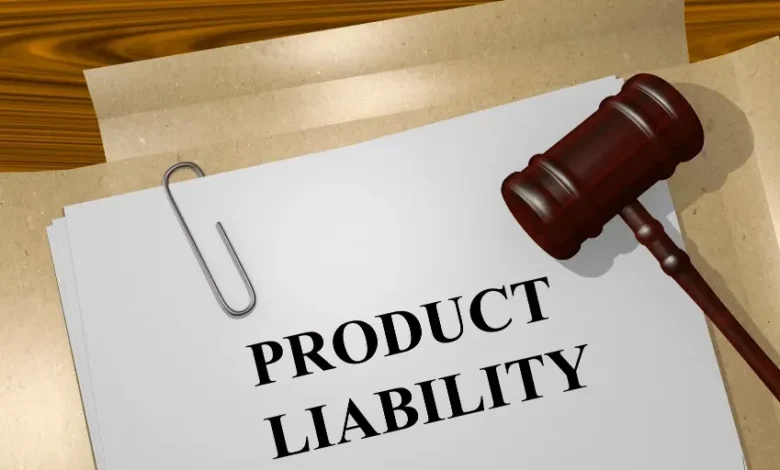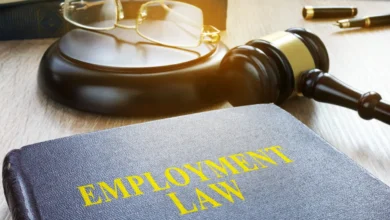How to Avoid Product Liability Lawsuits?

As a business owner or manufacturer, one of the most significant legal risks you face is the possibility of a product liability lawsuit. These lawsuits can be costly, time-consuming, and damaging to your reputation. However, there are several steps you can take to minimize the risk of facing a product liability lawsuit and protect your business. Product liability lawsuits can arise from various issues, including design defects, manufacturing defects, and failure to provide adequate warnings or instructions. These lawsuits can be brought by consumers, employees, or other parties who have been injured or suffered damages due to using a defective product. In addition to the financial costs of defending against a lawsuit and paying any resulting settlements or judgments, product liability lawsuits can damage a company’s reputation and lead to loss of business. Therefore, businesses must take proactive steps to avoid these types of lawsuits.
Contents
Understand Product Liability Laws
To avoid product liability lawsuits, it’s essential to understand the laws that govern product liability. In the United States, product liability laws vary by state, but generally, manufacturers, distributors, and sellers can be held liable for injuries or damages caused by defective products. There are three main types of product defects:
- Design defects: Flaws in the product’s design make it inherently dangerous.
- Manufacturing defects: Errors in the manufacturing process cause the product to deviate from its intended design.
- Warning defects: Failure to provide adequate warnings or instructions about the product’s potential dangers.
It’s important to note that product liability laws are based on the concept of strict liability, which means that a manufacturer or seller can be held liable for damages caused by a defective product even if they were not negligent in the design, manufacture, or sale of the product. This means that businesses must take all necessary precautions to ensure the safety of their products. In addition to understanding the types of product defects, companies should also be familiar with the various theories of liability that can be used in product liability lawsuits, such as breach of warranty, negligence, and misrepresentation. By thoroughly understanding product liability laws, businesses can take steps to minimize their risk of a lawsuit.
Implement a Comprehensive Quality Control Program
Implementing a comprehensive quality control program is one of the most effective ways to avoid product liability lawsuits. This program should include:
- Rigorous testing of products before they are released to the market.
- Regular inspections of manufacturing facilities to ensure that products are being produced according to specifications.
- Detailed record-keeping of all quality control measures taken.
By implementing a robust quality control program, you can identify and address potential defects before they lead to injuries or lawsuits. A comprehensive quality control program should involve all product lifecycle stages, from design and development to manufacturing and distribution. This may include conducting thorough risk assessments to identify potential hazards, implementing strict quality control measures during manufacturing, and regularly testing and inspecting products to ensure they meet safety standards. It’s also essential to have a system for tracking and responding to customer complaints or reports of product defects.
By promptly investigating and addressing any issues that arise, businesses can demonstrate their commitment to product safety and avoid escalation to a lawsuit. Investing in a strong quality control program may require additional resources and effort. Still, it can save a business from the significant costs and damages of product liability lawsuits.
Provide Clear and Accurate Product Warnings and Instructions
Another critical step in avoiding product liability lawsuits is to provide clear and accurate product warnings and instructions. Your product’s packaging and documentation should include:
- Detailed instructions on how to use the product safely.
- Warnings about any potential hazards associated with the product.
- Information about any necessary precautions users should take when using the product.
By providing comprehensive warnings and instructions, you can help ensure that consumers use your product safely and reduce the risk of injuries or lawsuits. Product warnings and instructions should be clear, concise, and understandable. They should be prominently displayed on the product packaging and included in any accompanying documentation, such as user manuals or safety data sheets. Warnings should address any known hazards associated with the product and any foreseeable misuse or unintended uses.
Instructions should provide step-by-step guidance on using the product safely and effectively, including any necessary precautions or protective equipment. It’s also important to consider the intended audience for the product and tailor the warnings and instructions accordingly. For example, products intended for use by children or elderly individuals may require additional warnings and safety features.
By providing thorough and accurate product warnings and instructions, businesses can demonstrate that they have taken reasonable steps to ensure the safety of their products and reduce the risk of product liability lawsuits.
Maintain Detailed Records
Maintaining detailed records is essential in avoiding product liability lawsuits. You should keep records of:
- Product designs and specifications.
- Quality control measures taken during manufacturing.
- Product testing results.
- Customer complaints and incident reports.
By maintaining detailed records, you can demonstrate that you took reasonable steps to ensure the safety of your product and can defend against any potential lawsuits. Detailed record-keeping is crucial throughout the product lifecycle, from initial design and development to post-market surveillance. Records should include documentation of all safety testing and quality control measures and any design changes or modifications made to the product over time.
Maintaining records of customer complaints, incident reports, and any corresponding investigations or corrective actions is also essential. These records demonstrate that the business took appropriate steps to address any identified safety issues and prevent future incidents. In the event of a product liability lawsuit, detailed records can be invaluable in defending against claims and demonstrating that the business acted reasonably and responsibly in ensuring the safety of its products.
It’s essential to have a robust system for organizing and maintaining these records and policies and procedures to retain them for the appropriate length of time based on applicable laws and regulations. By prioritizing detailed record-keeping, businesses can reduce the risk of product liability lawsuits and improve overall product safety and customer satisfaction.
Respond Promptly to Customer Complaints and Incident Reports
If a customer reports an incident or files a complaint about your product, responding promptly and taking appropriate action is essential. You should:
- Investigate the incident thoroughly to determine the cause.
- Take steps to address any identified defects or safety issues.
- Communicate with the customer to address their concerns and provide any necessary support.
By responding promptly to customer complaints and incident reports, you can demonstrate your commitment to product safety and avoid escalation to a lawsuit. A prompt and thorough response to customer complaints and incident reports is essential for several reasons.
First, it allows the business to identify and address potential safety issues as quickly as possible, which can help prevent future incidents and minimize the risk of injury to other customers.
Second, it demonstrates to the customer that their concerns are being taken seriously and that the business is committed to ensuring the safety and satisfaction of its customers. This can help build trust and loyalty, even in a negative experience. When investigating a customer complaint or incident report, it’s essential to gather as much information as possible, including details about the product, the circumstances of the incident, and any relevant documentation or evidence. This may involve conducting interviews with the customer, employees, or other witnesses and performing additional testing or analysis of the product.
Once the cause of the incident has been determined, the business should take appropriate steps to address any identified safety issues, such as issuing a product recall, providing additional warnings or instructions, or making design changes to prevent future incidents. Throughout the process, it’s essential to maintain open and transparent communication with the customer, providing regular updates on the status of the investigation and any corrective actions being taken. By responding promptly and effectively to customer complaints and incident reports, businesses can reduce the risk of product liability lawsuits and build a reputation for quality, safety, and customer service.
Consider Product Liability Insurance
Even with the best quality control measures and safety precautions, there is always a risk of facing a product liability lawsuit. To protect your business financially, consider obtaining product liability insurance. This type of insurance can help cover the costs of legal fees, settlements, and judgments in case of a lawsuit. Product liability insurance is essential for any business that manufactures, distributes, or sells products. Even with the most rigorous safety measures in place, there is always a risk that a product defect or safety issue could lead to injury or damage, resulting in a costly lawsuit.
Product liability insurance can provide financial protection in these situations, helping cover legal defense fees when using product liability lawyers, settlements, and judgments. When selecting a product liability insurance policy, it’s essential to carefully review the coverage and exclusions to ensure that it meets the specific needs of your business. Factors to consider may include:
- The types of products you manufacture or sell.
- The size and scope of your business.
- The potential risks associated with your products.
Working with an experienced insurance broker or agent who can help you navigate the complex world of product liability insurance and find the best policy for your needs is essential. In addition to providing financial protection, product liability insurance can also demonstrate to customers and stakeholders that your business takes product safety seriously and is prepared to handle any potential issues that may arise. This can build trust and confidence in your brand and potentially mitigate the reputational damage from a product liability lawsuit.
While product liability insurance can be a valuable tool for managing risk, it should not be seen as a substitute for a comprehensive product safety program. Businesses should still prioritize quality control, safety testing, and customer communication to minimize the risk of product defects and safety issues in the first place. By combining robust safety measures with appropriate insurance coverage, businesses can protect themselves financially while prioritizing their customers’ safety and satisfaction.
Product liability lawsuits can be a significant risk for businesses, but there are steps you can take to minimize that risk. By understanding product liability laws, implementing a comprehensive quality control program, providing clear and accurate product warnings and instructions, maintaining detailed records, responding promptly to customer complaints and incident reports, and considering product liability insurance, you can help protect your business from costly and damaging lawsuits. It’s important to remember that product safety should be a top priority for any business that manufactures, distributes, or sells products.
By taking a proactive approach to product safety and risk management, companies can reduce the risk of product liability lawsuits and build a reputation for quality, reliability, and customer service. This can help differentiate your business from competitors and drive long-term success. Implementing a comprehensive product safety program may require time and resources, but the benefits can be significant.
By prioritizing product safety, businesses can reduce the risk of costly lawsuits, protect their reputation and brand value, and build strong customer relationships based on trust and reliability. Ultimately, the key to avoiding product liability lawsuits is prioritizing product safety at every stage of the product life cycle, from design and development to manufacturing, distribution, and post-market surveillance.
By taking a holistic approach to product safety and risk management, businesses can minimize the risk of product defects and safety issues while protecting themselves financially and reputationally in the event of a product liability lawsuit. While no business can eliminate the risk of product liability lawsuits, following best practices and prioritizing product safety can significantly reduce their exposure and build a strong foundation for long-term success.


